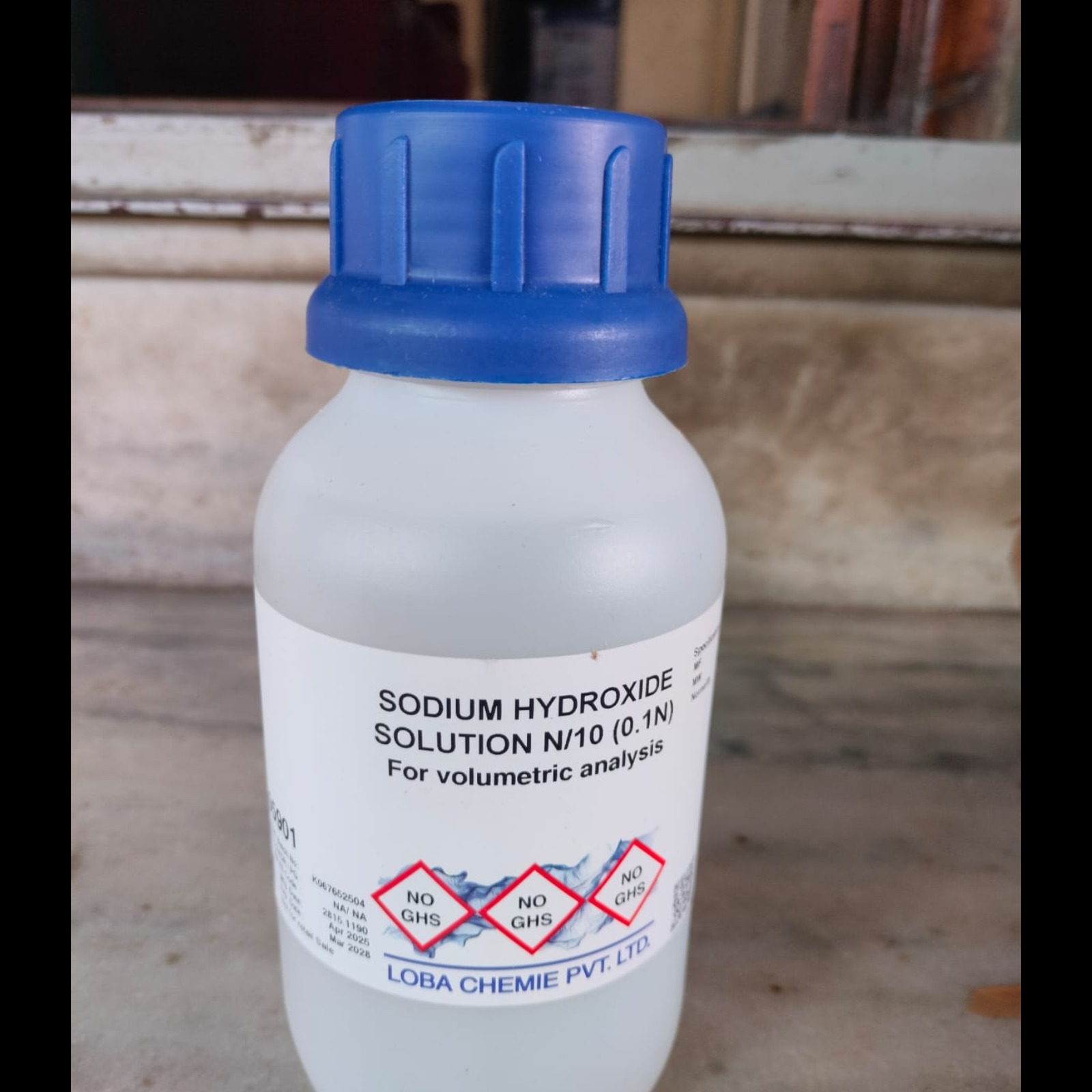
2025-08-07T06:02:26
A 0.1 N (normal) solution of sodium hydroxide (NaOH) means that there is 0.1 gram equivalent weight of NaOH dissolved in every liter of the solution. Since NaOH is a monobasic substance (meaning it can donate only one hydroxide ion (OH-) in a neutralization reaction), its equivalent weight is equal to its molecular weight. Applications of 0.1 N NaOH0.1 N NaOH solutions are commonly used in various applications, including: Acid-base titrations: As a strong base titrant for determining the concentration of acidic solutions. Pharmaceutical Industry: Used in the pharmaceutical industry to convert acidic drugs into their more water-soluble sodium salt forms. Printed Circuit Board Manufacturing: Used to develop the layout previously transferred to the photo-coated board with ultraviolet radiation. Research & Development: Used as a laboratory chemical and for the synthesis of substances. Explanation: Normality (N):Normality is a measure of concentration that expresses the number of equivalents of a solute per liter of solution. For NaOH, one equivalent is equal to its gram molecular weight (40 g), according to chemistry forums. 0.1 N NaOH: To prepare a 0.1 N solution, you need 0.1 equivalents of NaOH per liter, which is 0.1 * 40 grams = 4 grams. Preparation:Therefore, to prepare 1 liter of 0.1 N NaOH, dissolve 4 grams of NaOH in a small amount of distilled water and then dilute it to a final volume of 1 liter. Dilution:If you need a different volume, adjust the amount of NaOH proportionally. For example, to prepare 250 mL (0.25 L) of 0.1 N NaOH, you would dissolve (4 g / 1 L) * 0.25 L = 1 gram of NaOH.

Have a question? Ask here!
Required fields are marked *